Conversion of office space to residential
Corso di Porta Ticinese
Type
Location
Corso di Porta Ticinese, Milan
Year
in progress
Surface area
1000 m2 apartment and offices | 300 m2 terraces
Client
Private
Head Designer
Arch. Marco Vigo
Professional services
Concept, architectural design
Corso di Porta Ticinese
The property located in Corso di Porta Ticinese 89 is a building inside a courtyard and it overlooks the Parco delle Basiliche on the one side and the Diocesan Museum on the other.
Originally designed in the 1950s by Vico Magistretti it had been subjected to a series of additions and modifications that had greatly compromised it; today there is nothing recognizable from the initial layout. The property is structured over three levels: the garages and ancillary rooms are in the basement, while on the ground floor and first floor are for office use, and a flat roof slab belonging to the property completes it.
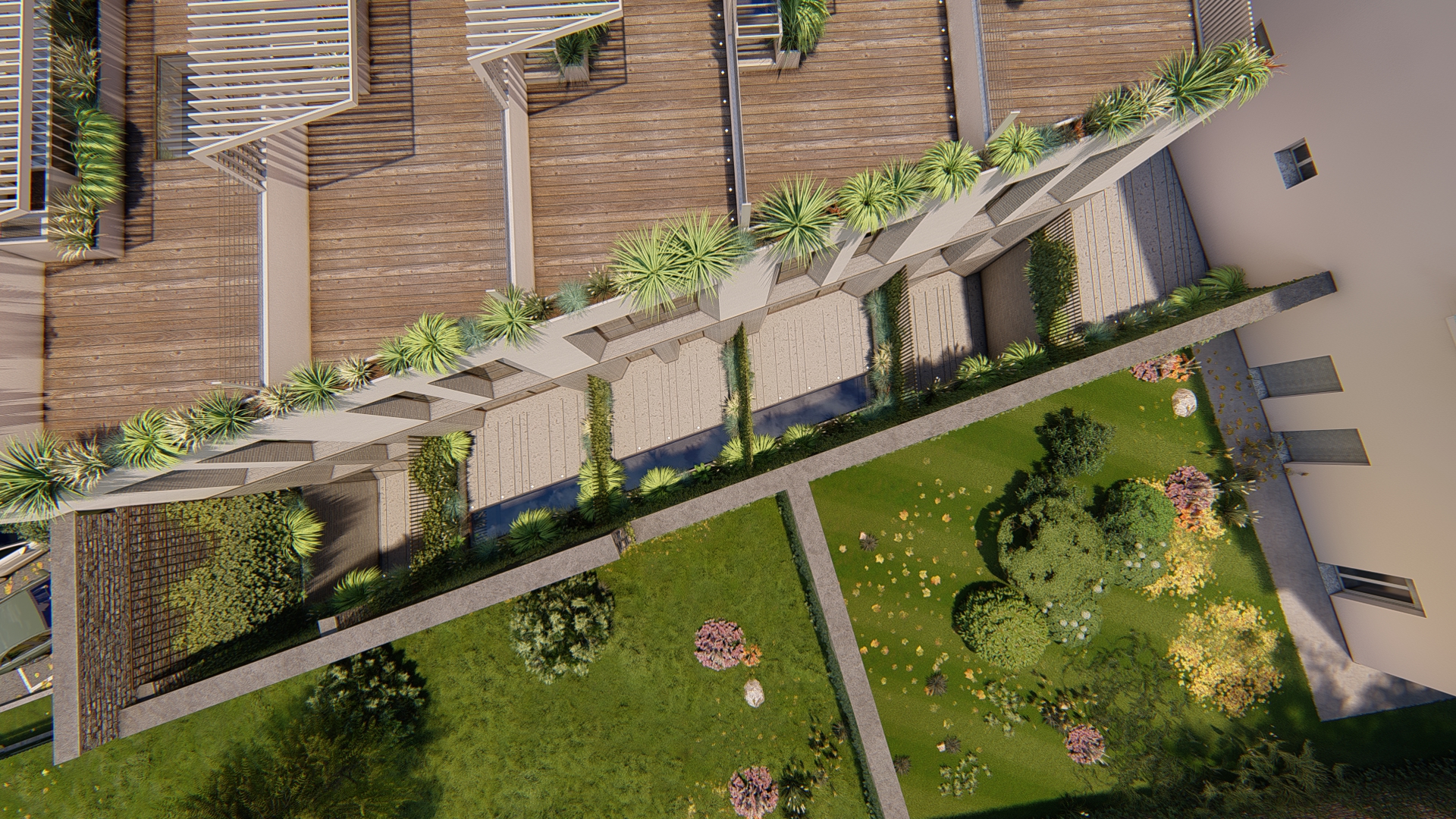
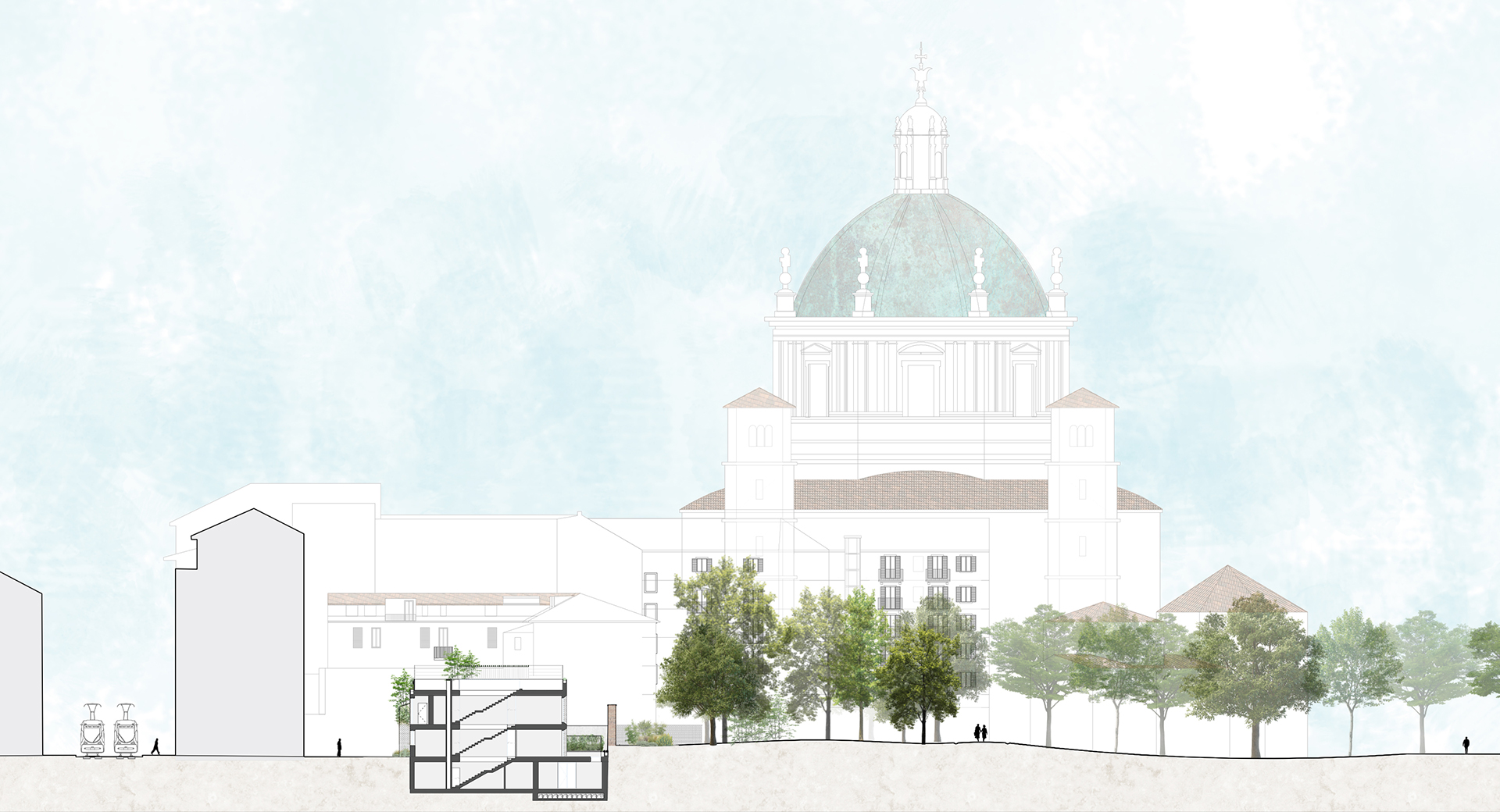
The project maintains the existing volume, with a slight increase thanks to a volume bonus resulting from energy efficiency.
This allows the plan of the side facing the Parco delle Basiliche to be redesigned following a polygonal line and creating large windows to give wide views to the interiors.
From an aesthetic perspective, some of the materials used in the restoration of the Diocesan Museum are also part of Milan’s historical tradition. The doors and windows are in burnished copper, white plaster was chosen for the upper part of the external facades, and ceppo di Gré stone was chosen for the basement and also used for the flooring of the inner courtyard.
There is a landscape constraint and therefore great care was taken in the design of the roof in order to integrate the building with its surroundings.
To reduce its impact, the roof has been transformed into terraces covered in teak wood with integrated greenery and baton parapets with simple and essential aesthetics, the volumes of the landing of the stairs to the terraces are compact and can be partially opened thanks to the hinged windows on one side. Large skylights allow natural light to enter the interior spaces below.
From the point of view of accesses, an entrance is created from the square of the Diocesan Museum thanks to an existing easement, the one from the inner courtyard of the condominium remains in use.
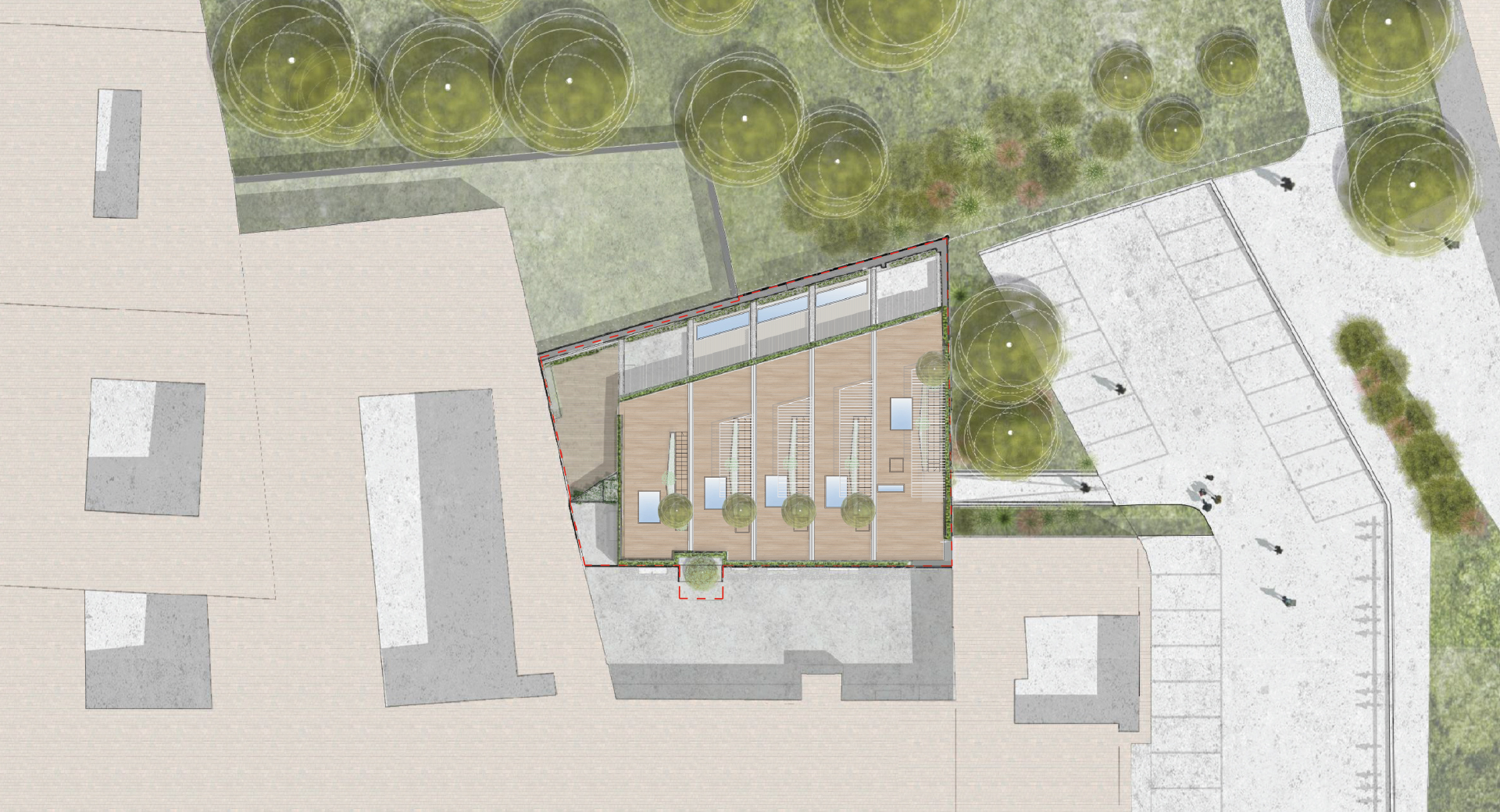
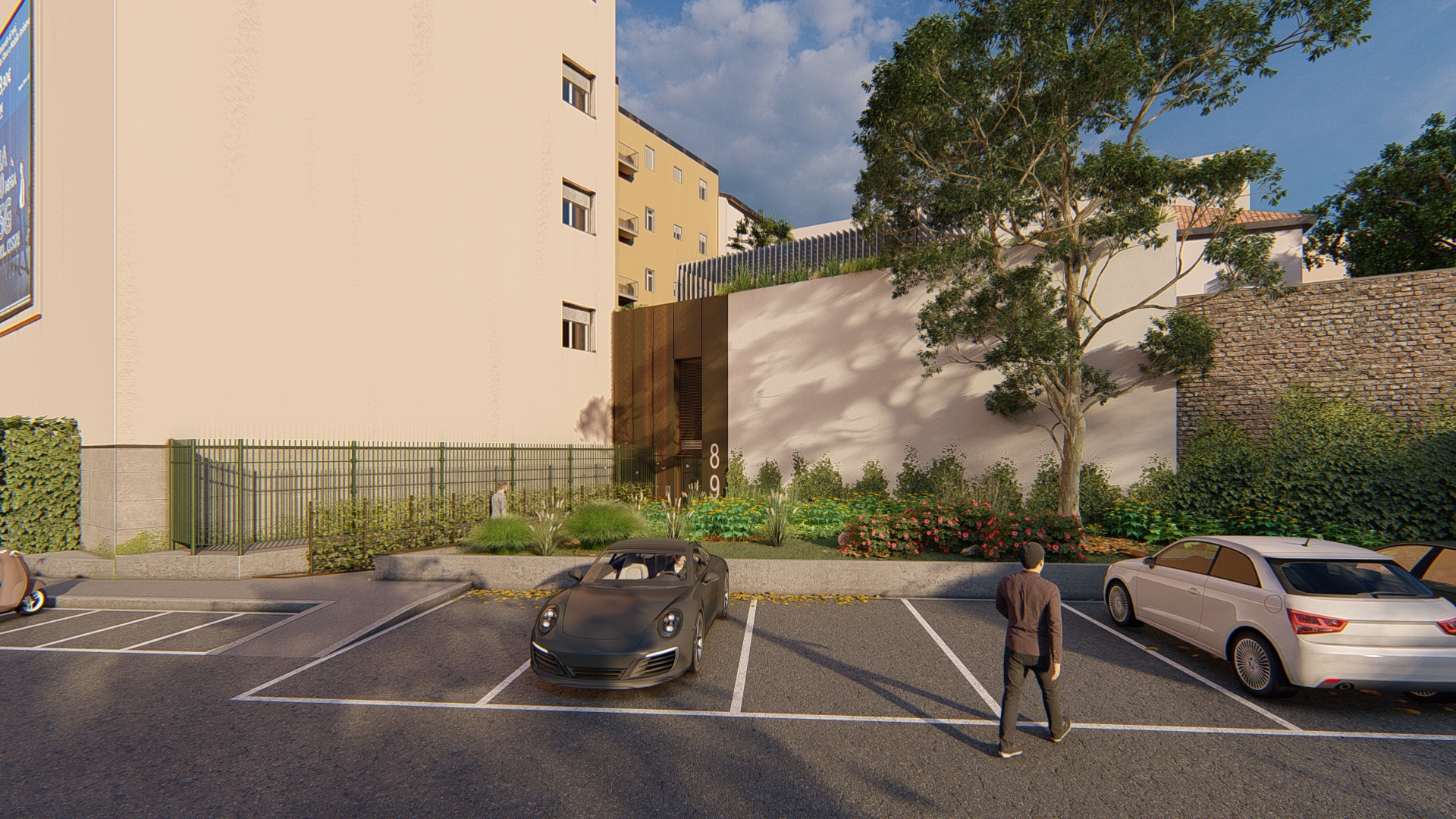
The building is divided into five units of about 130 / 180 square metres which are developed over three levels. The access to the units is on the second floor where the living room, dining room and kitchen are, the bedrooms are on the ground floor, while the service rooms such as the storeroom and technical rooms are in the basement.
On the -1 floor, there are appurtenances belonging to the units and an office unit that opens onto two patios and receives natural light through skylights in the ceiling.
The choice of positioning the living area on the highest floor allows direct contact with the terraces both through the skylights and through the stairs and gives the most privileged view towards the Parco delle Basiliche.
The stairs are a sculptural element that characterizes the environments on all the floors and feature glass walls that filter natural light inside.
The patios on the ground floor are extensions of the bedrooms and create a connection between the inside and outside, they are places of calm and reflection away from the noise of the city.
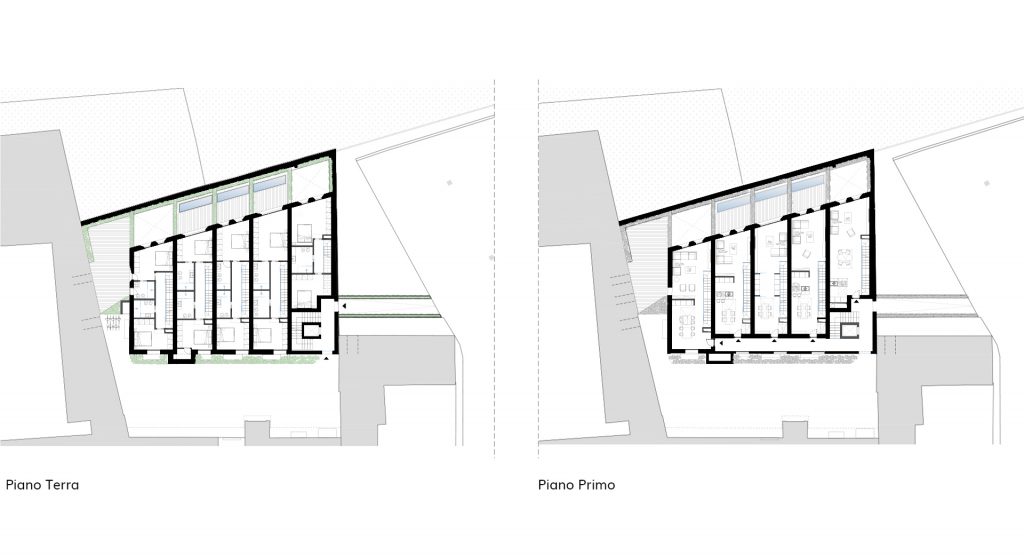
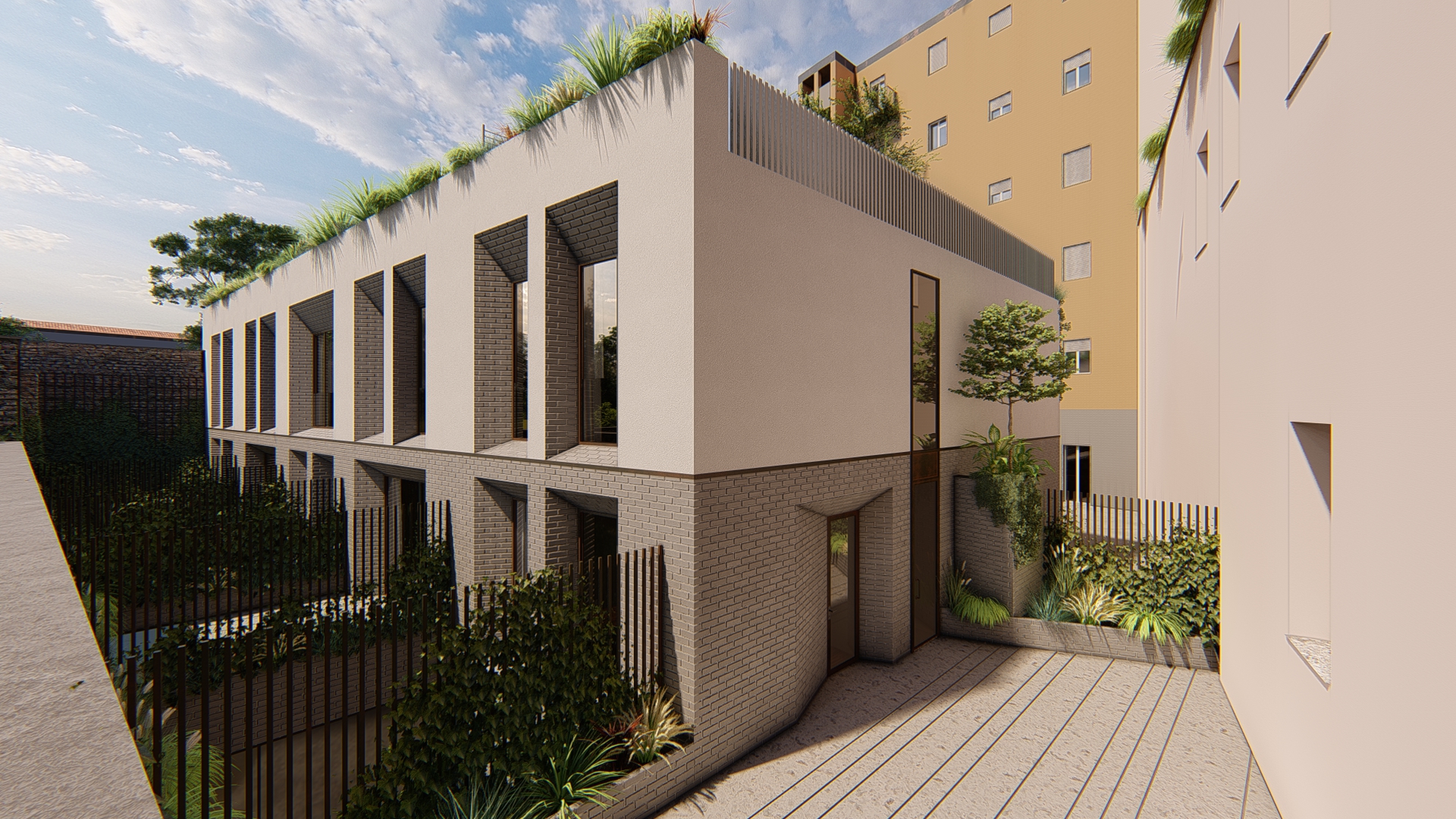
The elevation towards the Parco delle Basiliche has private patios and large windows in order to enjoy a beautiful view of the park, while the elevation towards the inner courtyard is closed as the view has no particular value, but stands out for the use of greenery and the laying of stone.
The interiors are characterized by the attention to architectural details and the choice of simple but precious materials such as aged wood on the floor, burnished copper on the cornices, and natural stones for the bathrooms.
For their spatial complexity the units are real urban villas at the level of being developed over several different levels that are inserted in the context of the historic centre of Milan.







